An NFT guide is a vital resource for anyone interested in new technologies. NFTs are here, and they’re already changing the world. However, NFTs have grown in popularity so quickly that they’ve become quite complex in a short amount of time. You’ll soon have the chance to learn everything there is to know about NFTs and how to use them.
Quick Menu:
- What’s the Underlying Meaning of an NFT?
- What Is an NFT?
- The History of NFTs
- What Is The Difference Between an NFT and Cryptocurrency?
- What Makes NFTs So Interesting?
- NFTs vs. Copyright
- What Are The Characteristics of an NFT?
- 13 Different Types of NFTs
- What Are Some Blockchains That Allow NFTs?
- NFT Markets to Buy NFTs
- Examples of Famous NFTs
- NFTs vs The Metaverse
- Criticisms of NFTs
- How Do DAOs Fit In?
What’s the Underlying Meaning of an NFT?
People often look for an NFT guide because the definition of NFT isn’t self-explanatory. The strict definition of an NFT is a non-fungible token. This definition also ties it into the blockchain. The blockchain is itself a digital public ledger that exists as a decentralized and distributed entity.
This definition essentially describes a system where digital goods can be itemized and described within a permanent record that nobody has sole control over. The reason this is so important comes down to the nature of digital items. Digital items can usually be copied indefinitely. It belies the entire concept of scarcity, but a non-fungible token is inherently unique.
When people tie a digital concept that can be copied into something uniquely singular, it will adopt that property. Essentially, a non-unique item can be made unique simply by tying it into something that is itself inherently unique.
What Is an NFT?
An NFT guide should always begin with a simple and concise definition. An NFT is a non-fungible token with cryptographic properties that are tied to the blockchain as a unique entity. It’s a fairly brief definition. But what does that mean in practical terms? Describing a computer as a device that calculates values based on 1s and 0s is a precise workable definition too. But the definition loses something by not explaining how those properties work in real-world scenarios. And the same is true for NFTs.
One of the defining traits for NFTs in actual usability scenarios is that they’re inherently unique and can bridge all mediums. An NFT can be thought of as a sort of digital fingerprint. When you see a fingerprint, you know that it can be traced back to a single unique individual. And the same is true of an NFT.
NFTs are in large part used to “tokenize” things. An NFT is an inherently unique digital marker. This can be linked to other digital items. Or it can even be associated with physical goods like artwork. As you’ve seen, this also has the side-effect of making digital items unique. Once a digital artwork or even code is associated with an NFT, it becomes a unique item. Taking a tangible asset and tying it into the blockchain is known as tokenizing it.
One of the exciting points about tokenizing things is that it also allows for something known as metadata. You might be familiar with metadata from image files. Image files often have information such as an associated location embedded within them. This makes it easy to know when and where something like a stunning sunset occurred. This typically isn’t possible with something like a painting.
But if a painting has been tokenized, then it could have that metadata added to it. This is all because NFT is an evolution of the ERC-721 standard. ERC-721 contains three components: ownership details, metadata, and security. The focus on these three points has been carried into the larger NFT standard. This will be important within the overall history of NFTs.
In short, there are some essential points to keep in mind about NFTs. They’re inherently secure and point to a unique item. NFTs can contain metadata. And NFTs lend all of those qualities to materials they’re attached to.
The History of NFTs
An NFT guide will typically look at the future. However, it’s also essential to look to the past to understand NFTs place in history. The first NFT was created in 2014 by Kevin McCoy and Anil Dash. Quantum NFT consisted of a video clip featuring McCoy’s wife, Jennifer. It was later sold for $4 as a proof of concept. At the time, the NFT was referred to as “monetized graphics.”
About a year later, NFTs would start to appear in a more mainstream context. October of that year marked when the first larger-scale NFT project, Etheria, was launched at DEVCON 1. Only a portion of these early NFTs was sold at the time. The success of an online game called CryptoKitties would bring even more attention to the subject thanks to its tradable virtual cat NFTs.
The public continued to learn about NFTs, and by 2020 the market was at $250 million. On March 13th of 2021, the last remaining items in DECON 1 collection sold for a total of $1.4 million. Bored Ape Yacht Club launched in April 2021 and helped the average person learn about the high value associated with NFTs.
What Is The Difference Between an NFT and Cryptocurrency?
An NFT guide wouldn’t be complete without bringing cryptocurrency into the discussion. It, too, is linked to the blockchain. Both technologies also use a digital wallet, essentially a collection of online addresses, to store valuables.
The main difference comes down to value. Cryptocurrency is fungible, and every token has the same value. For example, one person’s bitcoin is exactly the same value as another person’s. NFTs are non-fungible and have a different value based on their attached asset. It’s important to again keep in mind that all NFTs are inherently unique. As such, they will have different associated values.
What Makes NFTs So Interesting?
One point about the NFT has come up continually within this NFT guide. NFTs are a unique digital asset. And this is precisely why they’re so interesting. Likewise, that uniqueness is responsible for their rapid rise in popularity.
By 2021 everyone lived a significant chunk of their lives within digital spaces. People bought things through those spaces as well. But ownership always needed to be tied to something physical. NFTs finally removed that tether and tied digital transactions to digital ownership. If someone bought an item, they could instantly own it through NFT. NFTs changed ownership and sales methodologies.
NFTs vs. Copyright
Of course, the legalities of digital rights are inherently complex. Readers of the NFT guide might wonder about the role of copyright and intellectual property in NFT ownership. It’s important to remember that ownership of an NFT and ownership of a work’s copyright are two distinct things.
This is perhaps best stated by legal scholar Rebecca Tushnet. She states that “In one sense, the purchaser acquires whatever the art world thinks they have acquired.” Art is often an inherently subjective medium. What’s the value of the Mona Lisa? What about a painting a talented artist made of it? Or a picture? Each of these derivative works is unique. And like an NFT, the value of those works is largely decided by the art community as a whole.
This example also illustrates the role of copyright with NFTs. Just as in that example, an artist can continue to work with his subject. Someone can create multiple takes on the Mona Lisa. And someone can also make multiple NFTs of the same work if he’s the owner of its copyright.
You can also think of it as an animation frame from a cartoon. You can own a single frame that’s used to create that animation. However, that frame isn’t the full cartoon and doesn’t give you the right to watch its totality without buying the entire movie. Likewise, owning the frame doesn’t provide any rights to the character drawn within it. NFTs likewise don’t convey copyright.
What Are The Characteristics of an NFT?
So far, the NFT Guide has touched on just how complex NFTs are. And they are indeed a complex subject. But NFTs can also be viewed by some of their fundamental characteristics. This makes the NFTs a lot easier to conceptualize.
Singularity:
An NFT is essentially unique and singular. There’s only one version of any given NFT, and the metadata is a record of authenticity.
Proprietorship:
An NFT provides full ownership and proprietorship. Creators control the private key associated with an NFT and can transfer it accordingly.
Unbreakable:
An NFT is unbreakable and indivisible. An NFT is similar to an entry pass – you can’t portion it out to different people.
Rarity:
Because NFTs are unique, they can also be rare. Developers or artists can expand or limit NFT production as much as they want to control the larger market supply.
Exchanges:
NFTs are interoperable and can be exchanged, bought, or sold through different systems.
Openness:
NFT transactions are inherently open and transparent due to their presence on the blockchain. This ensures trust and authenticity.
13 Different Types of NFTs
At this point in the NFT guide, you’re probably wondering about just what kinds of NFTs are out there. An NFT can bridge the gap between analog and digital. Or it can live entirely within the virtual world. While there’s an unlimited number of NFTs out there, the following thirteen examples are the most popular.
NFT Art
Art comes up fairly often in an NFT guide for a good reason. NFT art is one of the most well-known and widespread examples of the technology, even though it can be a still image or even a full video, hand-drawn, CG, or a photograph.
NFT art collecting is essentially analogous to art collecting in real-world settings. The unique nature of NFTs ensures that someone can retain sole ownership of any tokenized work.
Media
General media extends beyond just music or images. Media as a whole has always been somewhat similar to art collecting. It’s not always about accessing the media directly. There’s also an element of collecting within any type of media.
For example, consider how DAPs changed concert experiences by giving people a direct look into specific and unique performances. Media NFTs can provide that same exclusivity in any kind of media you could imagine.
Music
Music is one of the most common forms of NFT after art. NFTs are making a significant impact on the music world in large part due to streaming. Streaming opens up content to the world. But streaming doesn’t provide much profit to the artists. NFTs prove to be a great way to make up for that fact. An NFT sale of someone’s music will usually translate to 100% of the profit going to musicians.
Gaming
NFTs are commonly tied to objects in video games. This transitions into the idea of scarcity. An item can be rare within the game. But if it’s connected to an NFT, the user can be assured that it’s unique.
Gaming also gives players a chance to financially benefit from the time invested in the hobby. If someone earns a unique item tied to NFTs, he’ll have something that may hold market value online.
Domain Names
An NFT can even function as a domain name. Domain names, like NFTs, are unique. They’re the text you type into your browser to go to a website. Obviously, a domain name can only point to one site. This is part of why services like Ethereum Name Service (ENS) have popped up. An ENS can translate prohibitively long URLs into easy-to-use NFTs. Other services like Unstoppable Domains can also act as decentralized name services.
Identity
Identity issues almost go hand in hand with the digital age. Identity theft is a common topic in nearly every area of the world. People’s personal and work lives are equally susceptible to identity theft and related issues.
NFTs are helping to solve that by creating unique methods of digital authentication. This also allows for secure and interoperable proof of identity that can work over multiple platforms. This will eventually create more secure systems.
NFT Trading Cards
NFTs are already similar to trading cards in that they’re unique items that can be collected. It’s little wonder that people are extending NFTs into something similar to baseball cards. NFTs should work in a similar way to those cards.
Baseball cards often sell for high value due to scarcity. Scarcity isn’t possible for standard digital items, but it can be done with NFTs. This can make an NFT trading card extremely interesting to collectors.
Memes
There’s a lot more to memes than humor. Memes have become a substantial part of Internet culture over the years. And it’s little surprise to see that they’ve become equally associated with NFTs. Traditionally, memes have suffered from their lack of commercial viability.
There hasn’t really been an excellent way to monetize memes. But NFTs have changed that, and people can now associate memes with unique NFTs. This opens up a path to meme monetization.
Databases
Databases are used within a variety of different industries. They act as a storehouse for digital information. However, they’re handy for Web-related technologies. In particular, Web 2.0 and Web 3.0 make heavy use of databases to interact with the public.
NFTs can work in conjunction with anything stored inside databases. This makes it easy to provide persistence between different forms of web-based activities such as Web 3.0 and the various forms of the metaverse.
Fashion NFTs
Fashion is one of the most rapidly growing areas for NFTs. The most common use comes from the metaverse. NFTs can be tied to fashion lines to create truly rare or unique looks. You can quite literally have a piece of virtual clothing that nobody else in the world can match. This is a common practice among individual digital artists. But some of the more prominent fashion brands are also getting into it.
Nike is one of the more prominent fashion brands branched out into NFTs. They’ve recently acquired a company by the name of RTFKT. This same company has sold 600 pairs of digital/analog sneakers for $3.1 million in six minutes.
Gucci is getting into NFTs as well with SUPERPLASTICS to launch SUPERGUCCI. The hallmark of the joint venture is Crypto Janky, a combination of NFT and fashionable Italian-made artwork. It features Gucci’s signature style and recognizable flair.
For more information about consumer brands in the metaverse, read “Top 12 Metaverse Brands Selling Their Products Digitally”.
Redeemables
The term redeemable harkens back to the practice of trading a winning ticket or the like for a prize. You can redeem those items for material goods. In the NFT world, a redeemable is a model where tokens are redeemable for physical goods. This is especially useful in situations where the goods are fragile. Those items can often better maintain value if they’re not being continually moved between different owners. People instead trade the NFT.
Membership
Exclusive memberships to amazing clubs are nothing new. For example, some of the most exclusive golf clubs often act as high-powered areas for intense negotiation. These areas serve as an arena where executives can compete in both a sport and financial battle. It’s little wonder that NFTs also factor into this part of people’s social life.
The Bored Ape Yacht Club was many people’s first introduction to NFTs. The company created a virtual gallery for artwork that members could only use. They sold merchandise that only members could obtain. Bored Ape Yacht Club even purchased virtual land in the metaverse through Decentraland. The virtual Yacht, casino, and parties are again only available for members. And membership is tied to NFTs.
This is one of the first and most prominent examples of NFT ownership being tied to membership. But it’s become something of a trend since then.
Tickets
NFTs can also be used for a more temporary form of membership with event tickets. A unique NFT can be the perfect way to signal that you’re allowed at an event. This gets around some of the more tedious aspects of proving identity and purchase proof. This also helps event planners to specify precisely how many people can attend an event. It’s easy to scale up numbers if they’re primarily associated with an NFT.
What Are Some Blockchains That Allow NFTs?
The NFT guide has brought up the blockchain reasonably often. But it’s essential to keep in mind that this isn’t a singular entity. The blockchain is a single concept but has multiple different implementations. Some allow for NFT use, and others don’t. The following blockchains are most commonly associated with NFT use.
Ethereum
Ethereum was among the first blockchain services to support NFTs. It’s little surprise that its initial popularity has led to widespread use. It’s currently estimated that around 90% of all digital assets are tied to the Ethereum blockchain.
Unfortunately, popularity has led to higher transaction fees and slower transactions. A new proof-of-stake consensus model aims to solve this problem soon. Until then, it’s clear that Ethereum, even with issues, is still the king of NFTs. The other options are still growing rapidly and providing some solid competition, though. Thankfully Ethereum is improving too.
Binance Smart Chain
The Binance Smart Chain (BSC) is often confused with the Binance Chain. But make no mistake, The Binance Smart Chain has a lot to differentiate itself from the competition. It’s particularly notable for the BNB token. But it’s also compatible with the Ethereum system.
The main difference is that the Binance Smart Chain places less strain than the standard Ethereum system. This, along with some other factors, makes it a speedy and lower-cost alternative to Ethereum. However, it’s also important to remember that Binance Smart Chain is relatively new. This has resulted in some security concerns.
Polygon
Polygon has a lot going for it. But as with some of the other NFT blockchain examples, its biggest claim to fame is Ethereum compatibility. This means that it can be leveraged for almost anything related to standard Ethereum usage scenarios. And obviously, NFTs and Ethereum tend to go hand in hand.
Two of the most significant differentiating factors for Polygon are speed and price. Polygon has most Ethereum benefits but typically boasts better performance for lower prices. It even has souped-up security with smart contracts. This has led to the OpenSea marketplace favoring Polygon for its NFT transactions.
Cardano
Cardano has taken a somewhat unorthodox approach to blockchain development. Instead of going by a whitepaper, it’s been built through a peer-reviewed process led by blockchain experts. This process has lent it a more experimental approach than many other blockchains used for NFTs. In fact, many people consider it to be the next iteration of Ethereum.
Of course, time will tell just how well Cardano’s approach matches or surpasses Ethereum. But it’s able to boast an impressive amount of interest and development for the moment. The system is being continually upgraded with new features such as an innovative contract capability.
Flow
Flow is one of the few blockchains that was designed around NFTs and similar consumer-facing applications. CryptoKitties came up earlier within this NFT guide as one of the earliest examples of NFTs. When the creator saw that his work was creating congestion in the Ethereum network, he decided to create his own implementation of the blockchain.
Today Flow has grown into a unique blockchain that can leverage its multi-node architecture to avoid the scalability issues seen with the initial CryptoKitties success. Flow’s focus on consumer use has attracted the attention of major companies. This includes CNN, the NBA, and UFC.
Tezos
Tezos is widely considered to be one of the blockchains to watch in the future. As with many of the non-Ethereum systems, it’s been primarily noticed due to its stability, speed, and low transaction fees. But Tezos is also especially notable for the fact that it’s heavily focused on continual innovation and community involvement with its open-source ecosystem.
The system also stresses its respect for environmental issues. The system takes less than 1 XTZ to create an NFT. And it’s thought to use about two million times less electricity than the Ethereum blockchain. This makes it an especially important system.
NFT Markets to Buy NFTs
Of course, any NFT guide needs to point out the best markets to actually buy NFTs from. There’s a lot of competition and innovation within the NFT marketplace. But the following markets are generally considered to be among the best of the best for NFTs.
OpenSea

The name OpenSea is often applied to the many payment tokens it accepts. It’s generally open to almost any crypto coin. At the moment, this list includes over 150 different types of coins. OpenSea also lets anyone sign up and browse its offerings without extra fees or associated membership costs.
OpenSea currently uses the Polygon blockchain, which helps it operate speedily and efficiently. The system makes it easy for people to create and sell their own NFTs. This process is known as minting and has helped OpenSea increase its NFT selection.
Rarible
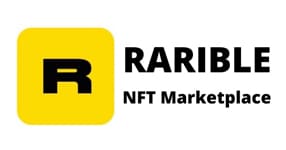
Rarible offers a wide range of different NFTs. This ranges from music to art and other collectibles. This extensive selection is somewhat similar to OpenSea. However, it has the opposite view of coin variety. In fact, you can only use Rarible’s own token called Rarible on the marketplace.
Despite this limitation, the market has garnered some significant attention. It’s been particularly successful with larger companies. Some of the companies which have sold on Rarible include Adobe, Taco Bell, and Yum! Brands’. However, these more prominent brands have enough presence to make competition difficult for the less well-known names.
SuperRare
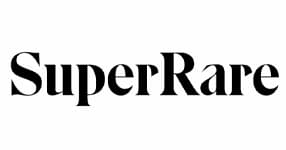
SuperRare offers an example of market convergence. The market is home to a wide variety of NFTs, including art, 3D images, digital assets, and videos. SuperRare also puts special emphasis on curated and especially rare artwork. But SuperRare has also branched out into other markets. The best example comes from their presence within the OpenSea market.
SuperRare also offers its own token, which is tied to the Ethereum blockchain. SuperRare feels like a well-curated fine art museum. But that also lends some exclusivity to the market as applicant numbers are always limited. This also helps garner attention.
Nifty Gateway
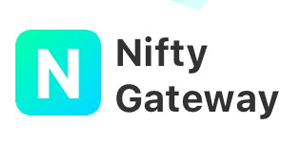
Nifty Gateway is an NFT market owned by the Gemini crypto exchange. NFTs sold on the exchange are known as “Nifties”. Nifty Gateway also has a unique approach to their Nifties. NFTs in general, are based around interoperability. An NFT is generally purchased and stored in a user’s digital wallet, but Nifty Gateway takes a different approach. A Nifty will instead be stored on Nifty Gateway and the Gemini system.
Nifty Gateway’s system reduces options and flexibility for users who rely on traditional methods. But other users might like its convenience and ability to work with US dollars.
Foundation
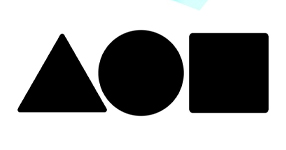
Foundation was designed from the start as a simple way to bid on digital assets and art. Foundation is one of the newer NFT related marketplaces. However, it’s been able to sell more than $100 million in NFTs in just one year.
The Foundation community as a whole tends to reach out to artists that they’re interested in. And new users are usually surprised by just how welcoming and easy to use the system is. If someone has a wallet with Ethereum, they have everything they need to get started with Foundation. It’s one of the most straightforward NFT markets.
Binance NFT

Binance NFT benefits heavily from its association with Binance. Binance is one of the more significant crypto exchanges, and its NFT arm is rapidly growing to match those high standards. Binance NFT has leveraged its legacy to attract the attention of some of the most significant partner entities and to create amazing events.
Of course, Binance tokens are welcome within the Binance NFT marketplace. But despite the market’s association with Binance, there’s no strict insistence on that currency. Users can use ETH, BNB, or several other formats to do business. On top of that, it offers low fees of 1%.
Examples of Famous NFTs
So far the NFT guide has covered the history of NFTs and some of the best places to buy them. But what about the most notable examples of NFT that are currently active in the market? The following examples are some of the most striking and famous NFTs.
CryptoPunks Shows That the Algorithm Can Create Art
CryptoPunks took form in 2017 from the creative minds at Larva Labs. This art set consists of 10,000 unique items. The characters within the art set all look like punks of one sort or another. And their unique designs will usually make people think about the outlandish fashion of the 80s mixed with a certain modern cyber-aesthetic.
The design behind the icons is particularly impressive since it was actually made through algorithmic generation. This means that one of the first NFT projects on Ethereum was partially created by artificial intelligence. It’s an appropriate sentiment for this collection of modern cyberpunks.
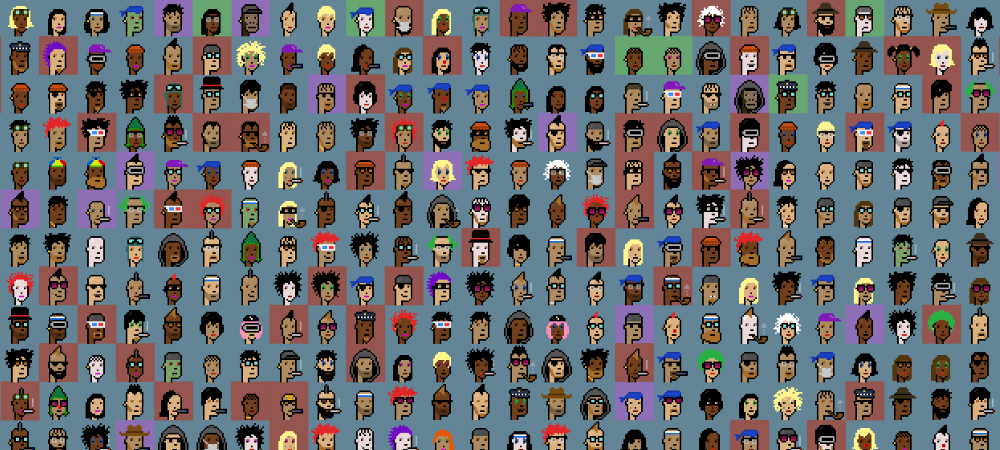
Image attribution: LarvaLabs – Crypto Punks
Bored Ape Yacht Club Creates an Exclusive Club in a Remote World
Bored Ape Yacht Club has come up in the NFT guide as one of the more exclusive examples of NFT ownership. The club is associated with some of the biggest names in the world. This includes Jimmy Fallon, Logan Paul, and Eminem.
The club’s name comes from their original 10,000 unique “bored apes” NFTs. These NFTs went public in April 2021 with their worth skyrocketing since then. This is partially because ownership of a “bored ape” also provides membership in the Bored Ape Yacht Club. Anyone who owns a bored ape piece can access exclusive events.
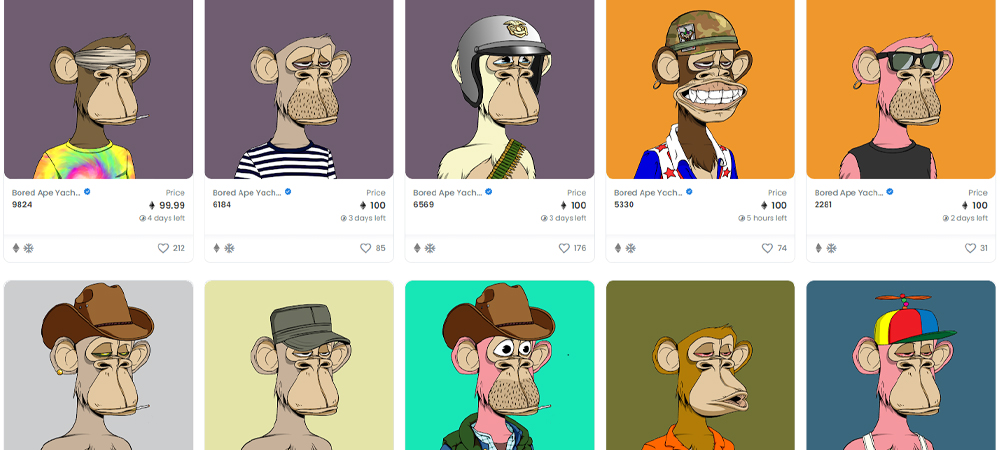
Image attribution: Bored Ape Yacht Club
Decentraland Provides a New Universe Filled With Art
Decentraland is a well-known property among fans of the metaverse. And it’s come up as the host of the Bored Ape Yacht Club’s yacht. But it’s also a name in NFTs all on its own.
Decentraland aims to provide users with a whole universe to explore and work with. This includes creating their own digital assets. And this, of course, comes in the form of NFTs. NFTs are one of the hottest commodities within Decentraland. Users can make, sell, use and wear NFTs. NFTs are essentially baked right into the structure of the living digital universe that is Decentraland’s system.
Video: Find out how you can create wearables for Decentraland
Axie Infinity Offers an Innovative Play-To-Earn System
Aie Infinity is a well-established and ongoing NFT project. The system is essentially a play-to-earn game based on the blockchain and was first introduced in 2018. At first glance, Axie Infinity seems to be based on the concept of virtual pets. The landscape is filled with strange creatures known as Axies. And these Axies can be collected by players as pets.
This system is made more interesting by the fact that Axies are NFTs. Axie Infinity is essentially filled with digital lifeforms that are all NFTs. People can build up the value of Axies over time. One even sold for $820,000.
Video: Axie Infinity Official Trailer
CryptoKitties Is the NFT That Helped To Start It All
CryptoKitties was first launched all the way back in 2017. Like Axie Infinity, CryptoKitties deals with virtual animals that also serve as NFTs. The project was initially created as a way to introduce people to the blockchain. The developers wanted to show that it could be used for more than just cryptocurrency.
The fact that CryptoKitties were among the first NFTs has also led to widespread compatibility with different systems. Users can let their CryptoKitties out of their wallets and into various digital landscapes. Compatible systems include Decentraland, Heaven.cat, and KotoWars. These CryptoKitties serve as a fun piece of history.
Video: CryptoKitties
NFTs vs The Metaverse
The metaverse has come up quite a few times in this NFT guide. The metaverse is essentially a digital universe where you can explore, interact with people, work, and live a whole new life. And, of course, you can also shop within those virtual worlds.
Shopping within the metaverse is usually done with cryptocurrency. And the items purchased are often in the form of NFTs. As you can see, the blockchain is an essential part of this process. The blockchain is the heart of the metaverse’s economy in a very real sense. And NFTs are the best method to certify and authenticate purchases.
NFTs are also acting as a bridge between the physical world and metaverse. NFTs are often sold as both a physical good and a digital representation of that item. Users might, for example, buy a shoe to wear in the real world and receive an NFT of that identical shoe to wear in the metaverse. This convergence will almost certainly grow along with the metaverse. Concerns, galleries, and others will merge with the metaverse. You can see the full impact of the metaverse in the article “Metaverse Guide; Understanding The Basics Will Open Up a New World”.
Criticisms of NFTs
Of course, all new technologies come with societal concerns. Anything that can do good for the world usually has some potential for harm as well. And NFTs are no different in that respect. Any NFT guide needs to touch on both the positive and negative concerns to offer the complete picture.
The Environmental Impact of NFTs
NFT use is tied into the blockchain. And one of the more significant points of concern with most blockchains is the heavy toll they can take on the environment. Blockchains usually have a high level of energy use, and this is typically associated with an equally significant level of greenhouse gas emissions.
However, the high level of electrical use can be scaled down. New validation protocols such as proof of stake are associated with much lower carbon footprints than their predecessors. And some blockchains have prioritized environmental impact in their overall design goals.
The Associated Fees Seen With NFTs
The vast majority of markets have some level of cost for entry. This is as true for NFT markets as it is for traditional physical markets. However, NFTs are new enough that there isn’t as much precedence for standard pricing systems. The end effect is that different markets often set fees that can be unwieldy or which don’t scale to different price ranges.
For example, on some markets, a low selling NFT might have associated fees that would ensure a sale would actually create a net loss for the artist. Different markets currently have different approaches to address this issue.
NFTs Potential for Fraud and Plagiarism
Plagiarism and fraud are among the biggest looming concerns for NFT markets. One of the best examples came in 2020, when Qing Han died. Her identity was then stolen, and her works were sold as NFTs. Someone posing as the artist Banksy also sold a fraudulent NFT. A process called sleepminting even lets scammers mint NFTs in an artist’s wallet and then transfer it to a different account.
Most markets are working to address this issue. For example, using “takedown teams” who respond to artist complaints is common. And work is going into secondary authenticity systems to help combat fraud.
How Do DAOs Fit In?
A complete NFT guide will, by necessity, have to avoid too much focus on related but still adjacent technologies. But DAOs deserve special mention. A Decentralized Autonomous Organization is essentially a group of people which operate through the blockchain.
DAOs use many elements traditionally associated with NFTs. And in fact, they tend to use most of the other technologies based on the blockchain. This includes cryptocurrencies and NFTs for incentives, payments, and various rewards. You can find out even more about DAOs and how they work with NFTs in the “DAO Guide; All You Need to Know About DAOs” article.
Any NFT Guide highlights the past and present. You’ve seen where NFTs came from and how to buy them. NFTs certainly have a bright future. But it’s up to you to actually jump in and see it firsthand.
Did You Like This Article About NFTs?
You might also be interested in the following articles:
- Metaverse Trends; Upcoming Milestones for the Digital Frontier
- Metaverse Meaning: Different Ways of Defining the Metaverse
- NFT Art Guide: Meaning, Examples, Market Places, and How to Buy

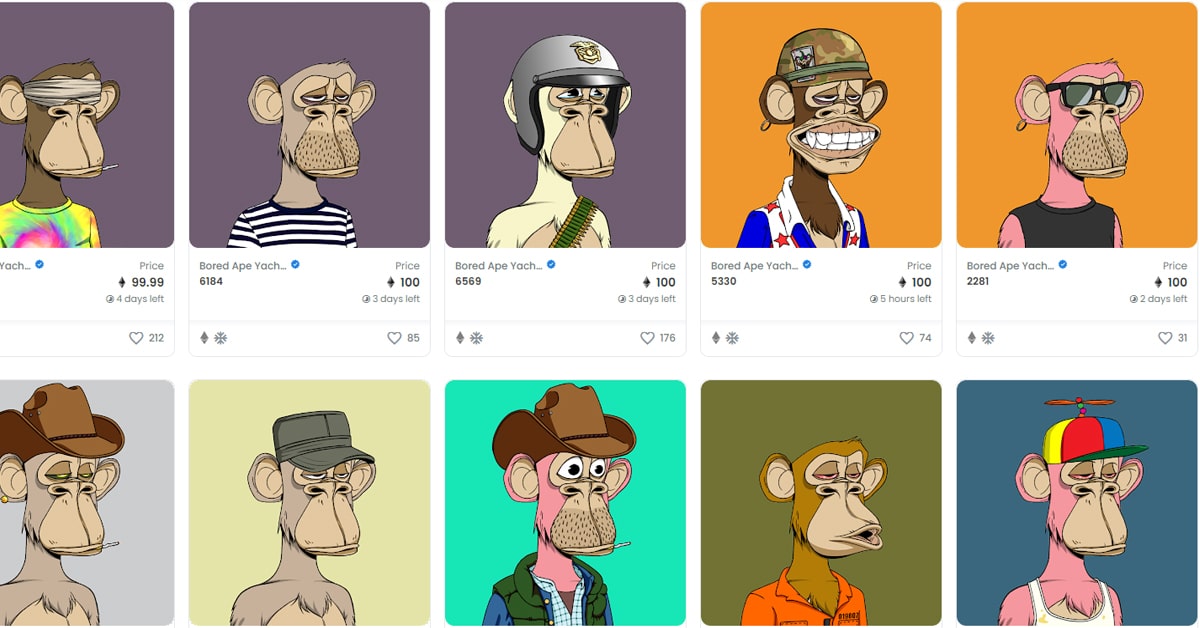



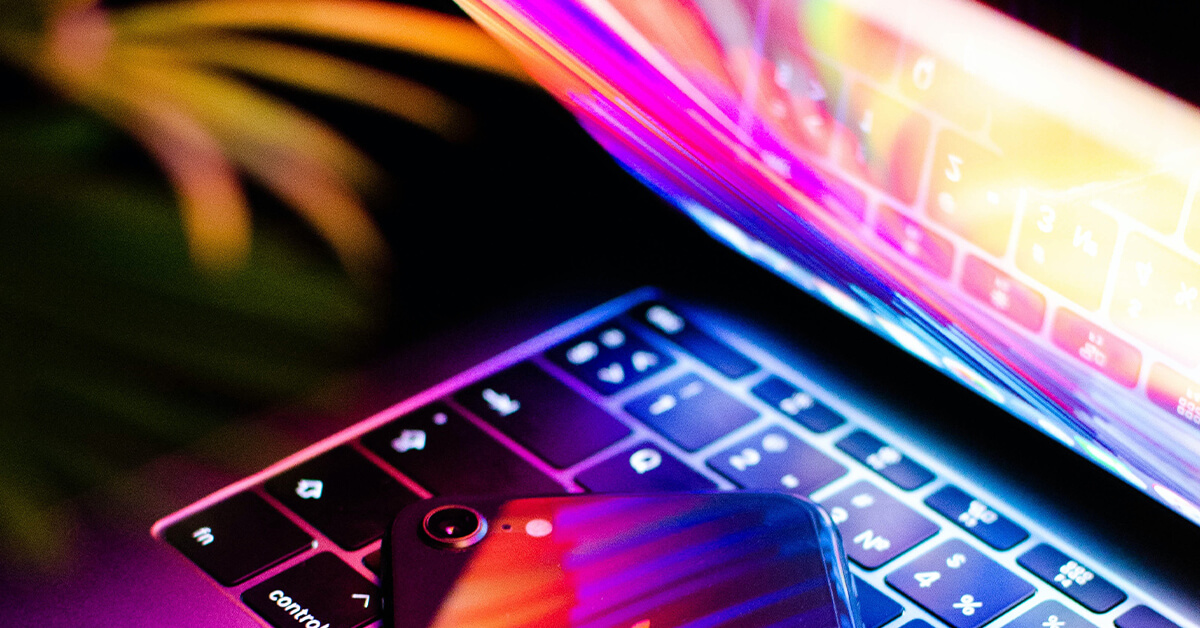



Leave A Comment